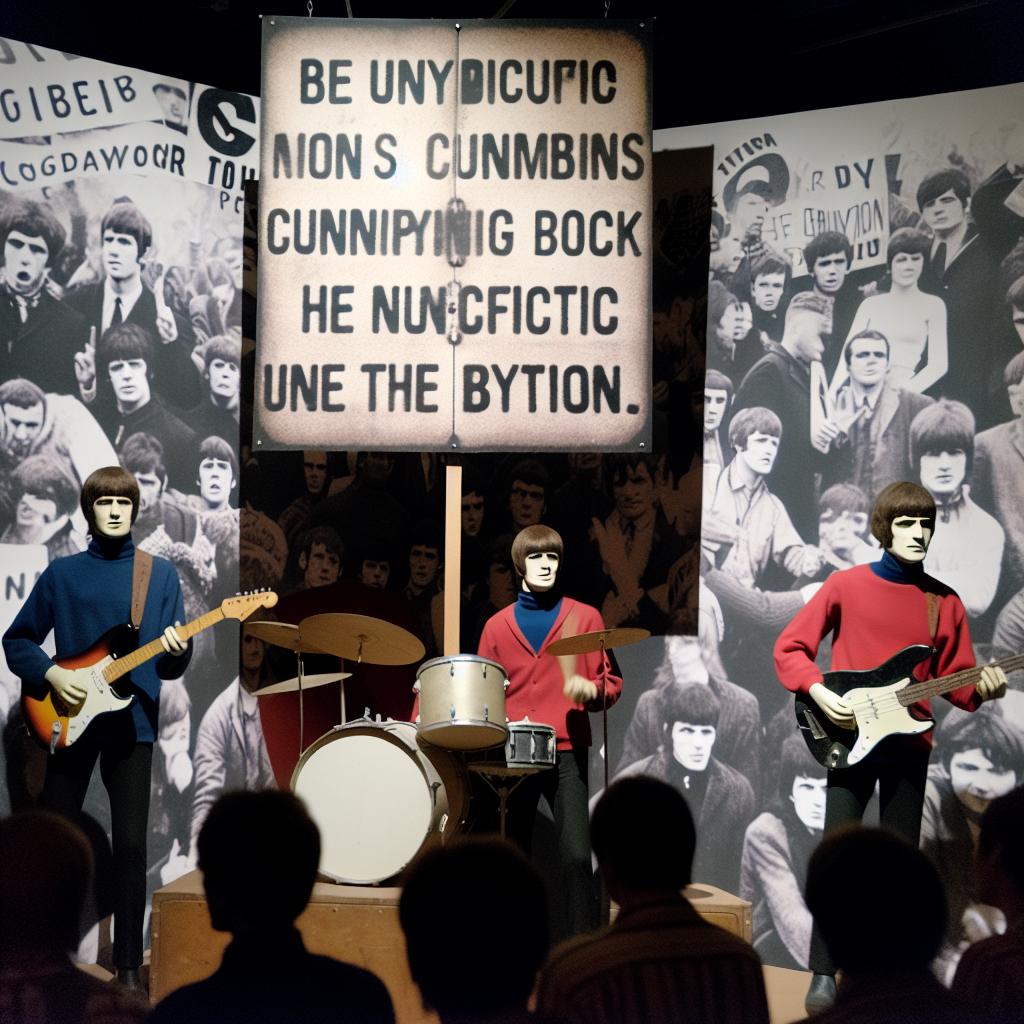The Origins of The Who’s Name
The British rock band known globally as The Who was formed in 1964. Before settling on their iconic name, the band underwent several name changes, reflecting their evolving identity in the dynamic music scene of the 1960s. Initially, they performed as The Detours, a name that was fitting for the period’s rock ‘n’ roll era, which was characterized by its rebellion and redefining of musical and cultural norms. This was a time when bands were seeking distinctive identities to set themselves apart in a rapidly growing industry. However, as the band members matured and honed their musical skills, they felt compelled to find a unique moniker to represent their evolving sound and the distinct image they wished to project.
It was Richard Barnes, a close friend of the band, who suggested they consider two options: The Who and The Hair. Among these, the band members, particularly Pete Townshend and Roger Daltrey, were drawn to The Who. They appreciated its enigmatic nature and how it often prompted listeners to ask questions like, “The who?” This sense of mystery and the questioning it provoked resonated with the band’s artistic vision, and they felt it encapsulated their identity in an intriguing manner. The name The Who also reflected their desire to challenge and disrupt the status quo, a theme prevalent in their music and public personas.
The Influence of Mods and Fashion
During this period, The Who’s early image was heavily influenced by the British Mod subculture, which was gaining substantial momentum in the early 1960s. The Mods became a crucial source of visual and musical inspiration for the band. Known for their stylish and clean-cut appearance, the Mods epitomized a new youth movement that valued fashion, music, and culture as forms of self-expression. The members of The Who adopted sharp suits and short, carefully styled hair, firmly aligning themselves with the Mod aesthetic. This alignment was not merely superficial; it was a reflection of their commitment to the values and lifestyle propagated by the Mod community.
Musically, The Who also integrated elements of rhythm and blues, which was a staple of Mod parties and dance halls. This genre was integral to the Mod identity and was appreciated for its soulfulness and energy. By weaving these musical elements into their sound, The Who resonated with an audience that identified with the look and sound of their time, successfully tapping into the cultural zeitgeist.
Role of Managerial Influence
The strategic brilliance behind The Who’s rise to fame cannot be fully appreciated without acknowledging the pivotal role played by their management. Kit Lambert and Chris Stamp, the band’s managers, were instrumental in shaping their image and marketing them as a Mod band during their early years. Possessing an astute understanding of the cultural landscape, Lambert and Stamp ensured that The Who frequented venues popular within the Mod scene, effectively building a dedicated fan base that was committed to the band’s music and philosophy.
Under the guidance of Lambert and Stamp, The Who’s concerts became more than just musical performances; they were strategic moves designed to cultivate a well-defined image. Their managers recognized the power of visuals in an era where image was everything, and they leveraged this understanding by crafting a public persona that resonated deeply with the youth. The image crafted not only attracted the Mods but also appealed to a broader audience looking for innovative and daring expressions of art and rebellion.
Development of a Stage Presence
The sophistication of The Who’s image extended onto the stage where they developed a signature presence marked by high-energy performances and, occasionally, the dramatic destruction of instruments. Pete Townshend’s windmill guitar playing and Keith Moon’s frenetic drumming were standout elements of their live shows, earning them a reputation for innovation and unpredictability.
This theatrical approach not only set them apart from their contemporaries but also underscored their rebellious spirit. It was a deliberate break from the norm that captivated audiences and solidified their status as trailblazers in the music industry. By the mid-1960s, The Who had firmly established themselves as not only leaders in the Mod movement but also as innovators within the rock genre.
Impact on Popular Culture
The Who’s name and image facilitated their rise to fame and contributed significantly to popular culture. By aligning themselves with the Mod movement, they helped popularize it globally, introducing its music and fashion aesthetics to audiences around the world. They were not merely participants in a cultural movement; they were influential powerhouses that helped define and expand it.
The band’s aesthetic and music have since influenced countless artists across generations and continue to be recognized and appreciated by new generations of fans. Their creativity and the thoughtful consideration behind their name and image, paired with their musical talent, ensured The Who’s lasting legacy in the world of rock music. As cultural iconoclasts, The Who have left an indelible impact on music and popular culture, encapsulating the spirit of an era and inspiring countless artists and fans worldwide.
In summary, the origin of The Who’s name and their subsequent cultural influence encapsulates their journey from a promising local band to international rock legends. This journey, marked by alliances with cultural movements like the Mods and managed strategically by visionary leaders, exemplifies how The Who not only defined their identity but also shaped the cultural narrative of their time.
